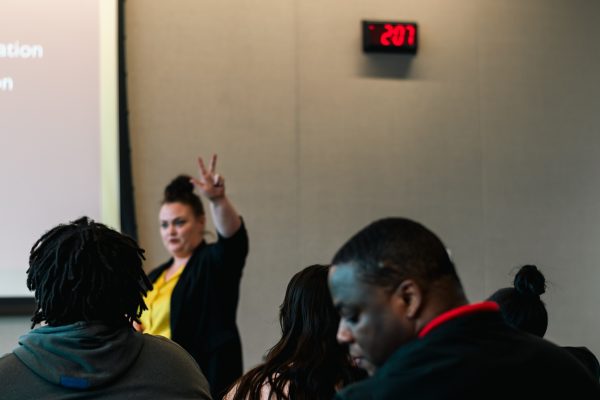Carefully crafted LinkedIn profile showcases ambition
May 16, 2013
There is more to attracting the attention of potential employers through a LinkedIn profile than simply filling it out with résumé information and posting a photo.
According to Employer Relations Manager Dena Ogden, creating a profile that will catch employers’ attention begins with doing research into the careers and profiles of people who are already doing the job a student wants to do.
Equally important, according to a May 8 article on NewGradLife.com, is that students can use profile searches to find companies where they might want to work so they can research those companies further.
“I want them to look at profiles of people in similar positions, look at companies, look at what alumni have done, … so that you’re creating a professional online presence,” says Ogden. “Another [goal] is contact development, getting in touch with … professionals. People tend to be more forgiving with their time when you identify as a student, and more willing to help.”
Ogden said that professionals take an interest in what a student does if the student approaches them ready to learn, saying, “Could I ask you a few questions?” or “Can we connect on LinkedIn?” or “Could I do an informational interview with you?”
Berto Cerrillo, adviser for campus programs, said that a good way to approach LinkedIn is to treat it as an opportunity to build a profile of the professional the student wants to be. “If they want to be an engineer, they can show projects they’ve worked on or skills they have. A graphic designer is a great one: imaging, designing, flyers, they’re able to really showcase those skillsets on LinkedIn,” said Cerrillo.
When starting a new profile, a student should go into the “settings” menu, choose the “communications” tab, and click “Select the types of messages you’re willing to receive,” according to LinkedIn.com. The NewGradLife.com article goes on to say that LinkedIn users should connect with friends, family and colleagues and then ask for recommendations on LinkedIn.
Ogden recommends that students participate in LinkedIn groups and discussions. “Groups are a big help for students who are looking to explore a certain area. You’re seeing what professionals in that area are talking about, the language and trends. … It’s a huge advantage for students. You can mention it when you’re interviewing or having conversations,” Ogden said.
“I can say this,” said Cerrillo. “If you’re looking for an employer who’s more cutting-edge and looking at the whole person, they’re definitely going to be just as interested in your LinkedIn profile as in your résumé.”
He said that when he looks at LinkedIn profiles, he is not merely looking for a skillset that matches his hiring needs; he is looking to see how their story fits into his. According to Cerrillo, students should think about what they want to become and find examples of that ambition that they can add to their LinkedIn profile, such as work samples and blogs.
Cerrillo said, “LinkedIn is a great way for students to show that story, that journey of trying to become a person who’s at the front of that career, and to show the work they have done up to that point. Be upfront about the big dreams and the big goals, and talk about how you’re getting there.
—————————————————
Ten tips for setting up and maintaining a solid LinkedIn profile
- Use a professional email address, or at least one that is neutral.
- Post a polished, professional-looking headshot of yourself wearing professional attire.
- When entering your skills, remember that these will also be keywords for your profile. When people search for these keywords, they will see your profile. (Later you will ask the people you are connected to recommend you for whichever skills each one can vouch for.)
- Set your headline by going to your profile page and choosing “edit profile.” The headline is directly under your name on your profile page. Make sure its style appeals to the types of employers and companies you want to attract.
- Fill out the basics first, such as past positions, current position and professional memberships.
- Then, add extras such as blog links, work samples or your Twitter account.
- Compare your profile to profiles of people doing the job you want. Do you need more skills or more experience?
- Start working on needed areas of professional growth. Post regular LinkedIn status updates on your continuing professional activities.
- Join LinkedIn groups in your professional areas. Read the discussion board frequently.
- Post up-to-date professional news and educational items at least once a week.







![Simmons said the biggest reasons for her success this year were “God, hard work, and trusting [her] coach and what she has planned.”](https://theeasterner.org/wp-content/uploads/2024/05/image1-1-1200x800.jpg)










